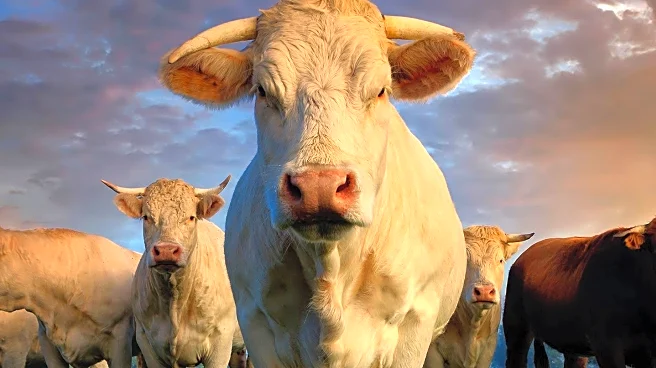What's Happening?
A Spanish researcher, Iker Zuriguel, is applying physics to understand crowd movements and improve public safety during large gatherings. His work focuses on how crowds behave in dense situations, such
as at concerts or pilgrimages, where rapid movement can lead to dangerous crushes. Zuriguel, an applied physicist at the University of Navarra, has conducted experiments with grains, sheep, and soldiers to study crowd dynamics. His research suggests that placing obstacles near exits can improve flow and reduce pressure, potentially preventing jams and crushes. However, experiments with human crowds have shown mixed results, indicating the complexity of human behavior compared to particles or animals.
Why It's Important?
Understanding crowd dynamics is crucial for public safety, especially in events where large numbers of people gather. Crush injuries can be fatal, and Zuriguel's research aims to develop strategies to prevent such incidents. By identifying patterns in crowd movements, his work could inform the design of safer venues and evacuation procedures. This research has implications for event organizers, urban planners, and public safety officials, who can use these insights to mitigate risks during large-scale events. The potential to save lives and prevent injuries makes this study significant in the field of crowd management.
What's Next?
Zuriguel continues to explore crowd dynamics, focusing on real-world applications. He is analyzing pressure waves in crowds, which can lead to dangerous situations. His ongoing research aims to identify strategies to break up these waves and prevent disasters. Future studies may involve collaborations with event organizers and public safety officials to test and implement these strategies in various settings. The goal is to translate scientific findings into practical recommendations that enhance safety at large gatherings.
Beyond the Headlines
Zuriguel's research highlights the intersection of physics and human behavior, offering insights into how individuals act in crowds. This work raises ethical considerations about crowd control and the responsibility of organizers to ensure safety. It also underscores the importance of interdisciplinary approaches in solving complex social issues, combining physics, psychology, and public policy to address crowd safety.











